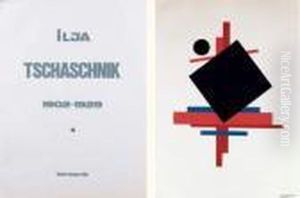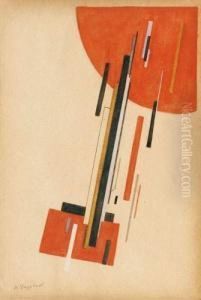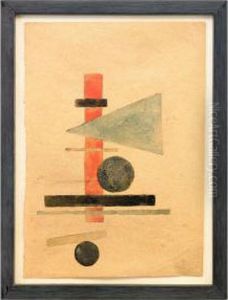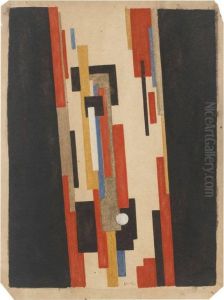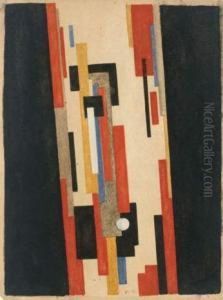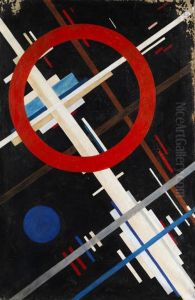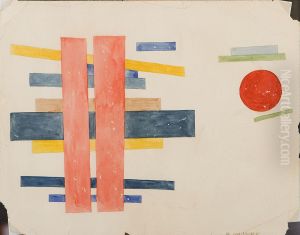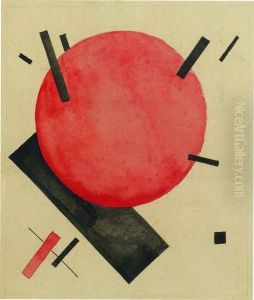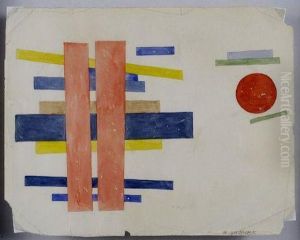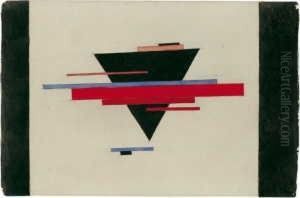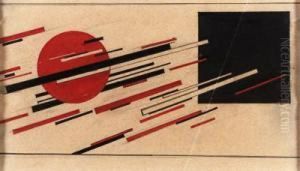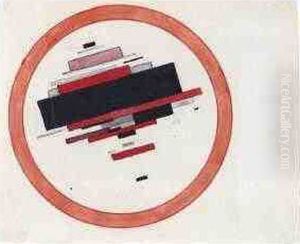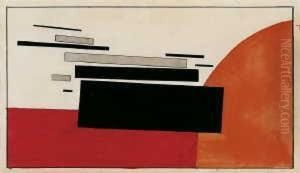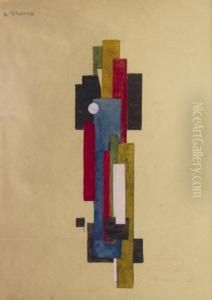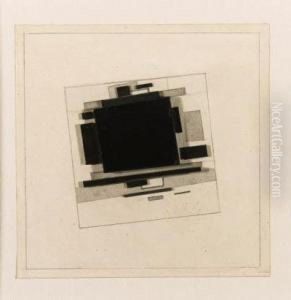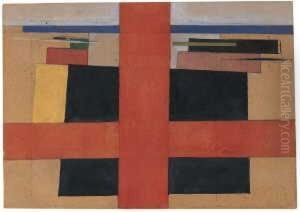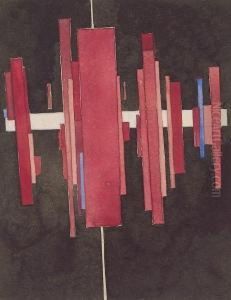Ilya Grigorevitch Chashnik Paintings
Ilya Grigorevitch Chashnik was a notable avant-garde artist, associated particularly with Suprematism, an art movement focused on basic geometric forms and created by Kazimir Malevich. Chashnik was born in 1902 in Lúčny, Vitebsk Governorate, which was then part of the Russian Empire and is now in Belarus. He showed an early talent for art, which led him to study at the Vitebsk Art School, where he was a student under Malevich and El Lissitzky, two prominent figures in Russian avant-garde art.
During his time at the Vitebsk Art School, Chashnik became deeply influenced by Malevich's theories and practices. He adopted the Suprematist vision, striving to express the 'supremacy of pure artistic feeling' rather than visual depictions of objects. In his work, Chashnik often focused on the interaction of colored geometric shapes on flat planes to explore spatial relationships and the dynamics of form and color.
Chashnik collaborated with his mentors on various projects, including the design and decoration of exhibition spaces and theatrical performances. His work extended beyond painting to encompass a range of artistic practices, including graphic design, stage design, and teaching.
Despite his promising career, Chashnik's life was cut short. He died tragically young at the age of 27 in 1929, under circumstances that remain somewhat unclear, leaving behind a relatively small but influential body of work. His contributions to Suprematism continued to resonate throughout the 20th century, influencing generations of artists and helping to shape the course of modern art. Chashnik's legacy lives on through his innovative approach to art and his commitment to exploring the fundamental elements of composition, color, and form.


